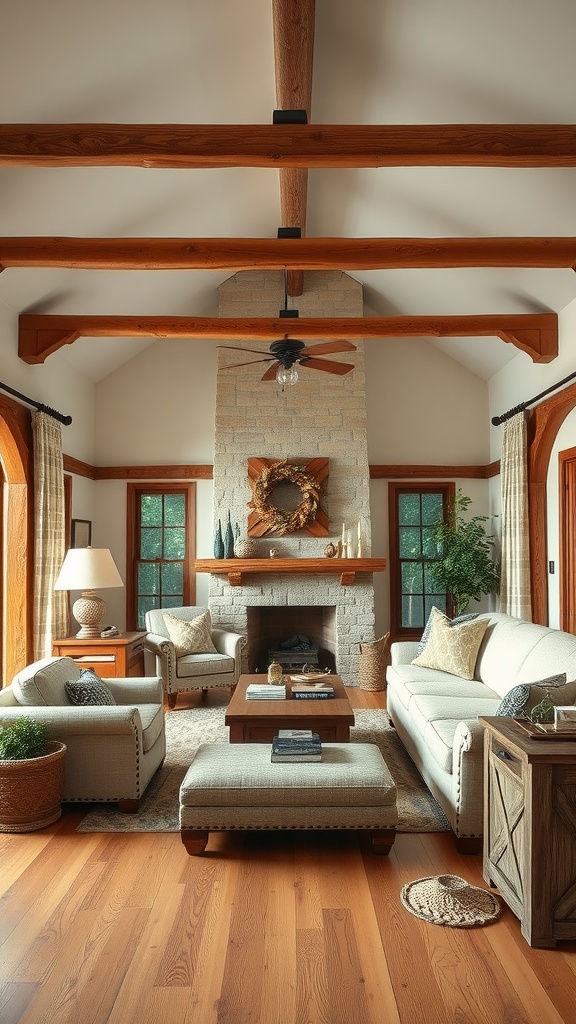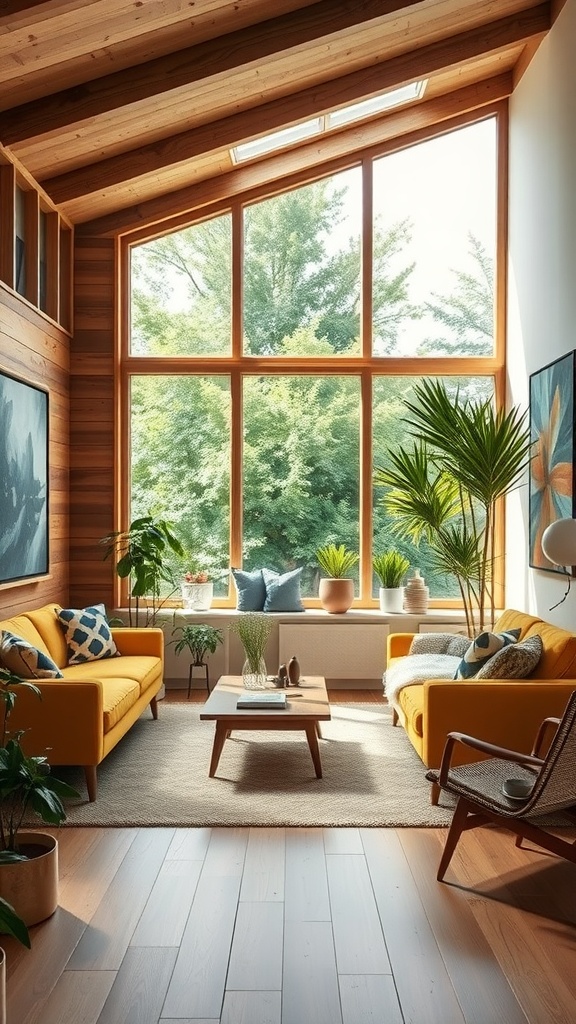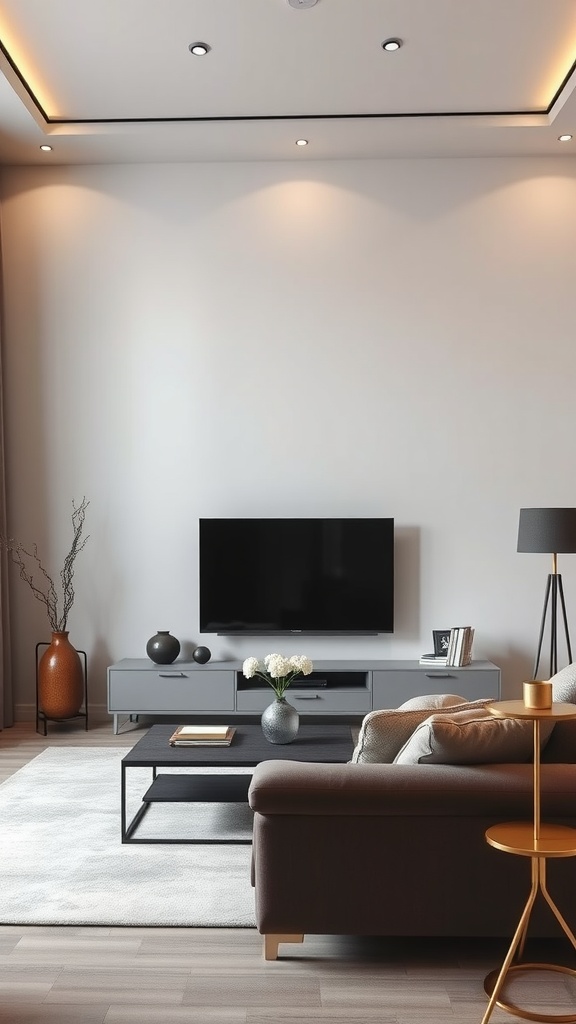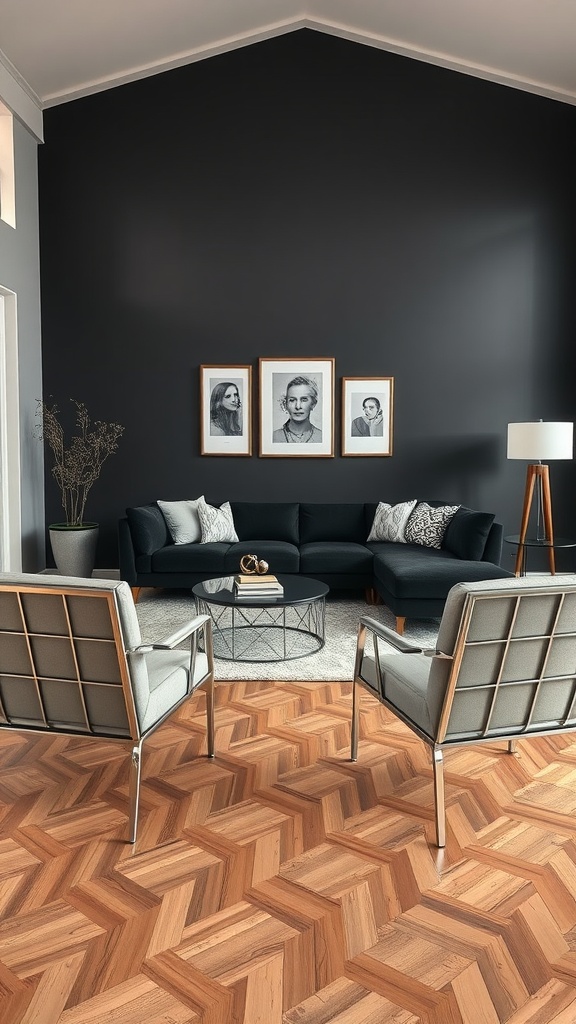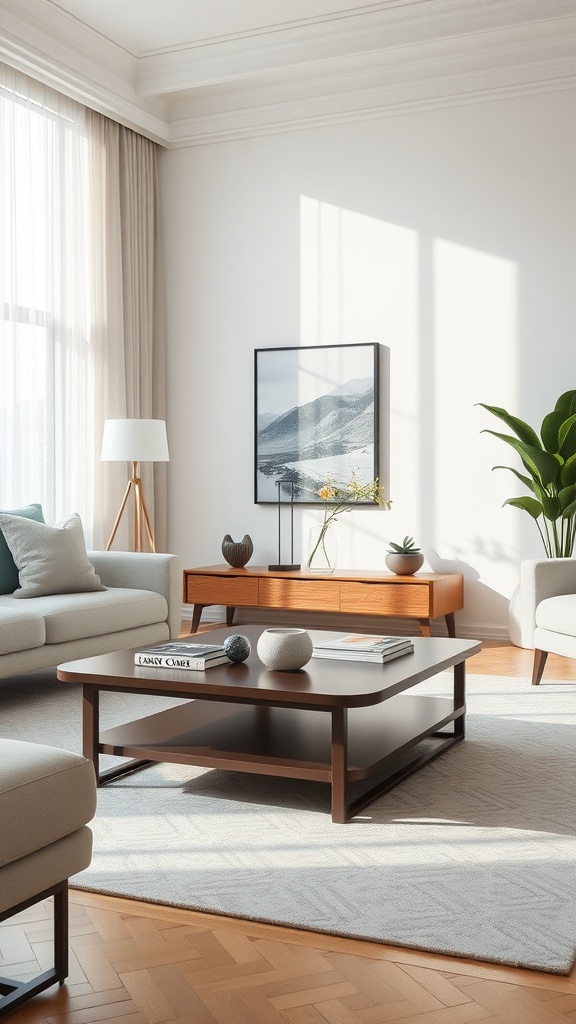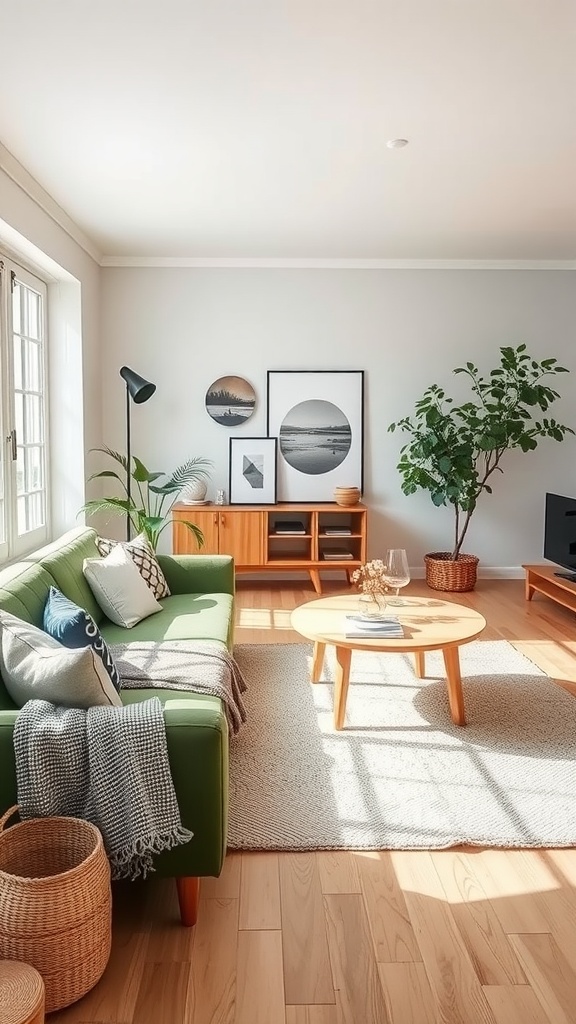19 Minimalist Living Room Ideas for a Calm, Clean, and Stylish Space
Minimalism is more than just a design trend—it’s a lifestyle that encourages simplicity, tranquility, and a sense of freedom in your living space. If you’re ready to embrace this sleek, serene aesthetic in your living room, here are 19 minimalist living room ideas that will inspire you to create a calm and clutter-free environment.
These ideas are designed to make your space look spacious and clean without sacrificing comfort or style. Let’s dive in and explore these easy-to-implement concepts that’ll help you create a minimalist haven in your own home.
1. Neutral Color Palette
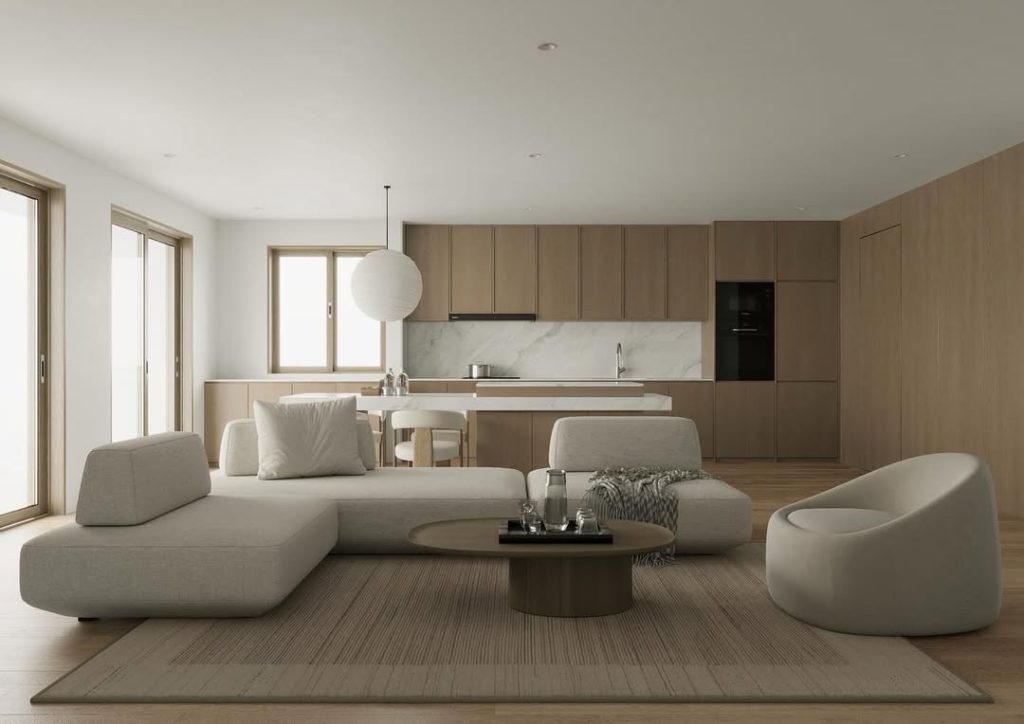
The foundation of any minimalist living room begins with a neutral color palette. Think whites, beiges, soft grays, and earthy tones—colors that promote calmness and simplicity. Neutral walls, ceilings, and floors provide the perfect backdrop for minimalist furniture and accessories. These muted tones can help your living room feel more open and spacious, while still offering warmth and sophistication.
Use variations of beige or gray to give your living room depth and dimension without overwhelming the space. Neutral colors also make it easier to mix and match different materials and textures like wood, metal, and glass, which are common in minimalist design. You can also add pops of color through accent pieces such as throw pillows or artwork, but the key is to keep it subtle to maintain the serene atmosphere.
2. Floating Furniture

One of the best ways to create a minimalist vibe is by utilizing floating furniture. Floating furniture refers to pieces that appear to “float” off the ground, giving the room a lighter and airier feel. For example, opt for a couch with thin metal legs or a coffee table with a glass top and minimal base. These types of furniture pieces reduce visual clutter by exposing more of the floor underneath.
By leaving the floor visible, you create the illusion of a more spacious room. Floating furniture also promotes easy cleaning, as you can quickly vacuum and dust the areas beneath the furniture. The design looks sleek and contemporary, which is perfect for a modern minimalist living room.
3. Streamlined Sofa
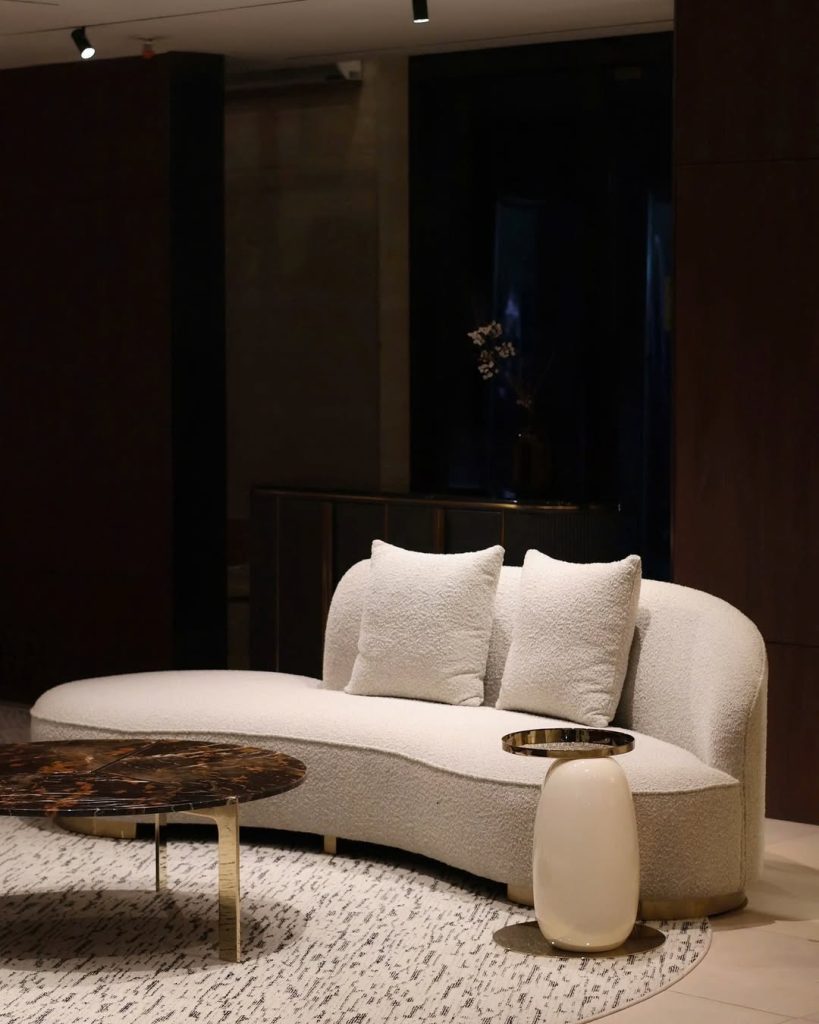
When choosing a sofa for a minimalist living room, the key is simplicity. A streamlined, low-profile sofa with clean lines will elevate your space and serve as a functional yet stylish piece of furniture. Stick to neutral colors such as gray, white, or beige for the upholstery, and avoid anything too plush or overstuffed.
A minimalist sofa should have sleek, square or rounded edges, with no excessive cushions or ornate detailing. You may even want to consider a sectional or modular sofa that allows for a customized layout. Adding minimalist, cozy throws or a single accent pillow can complete the look while maintaining the uncluttered aesthetic.
4. Simple Statement Lighting
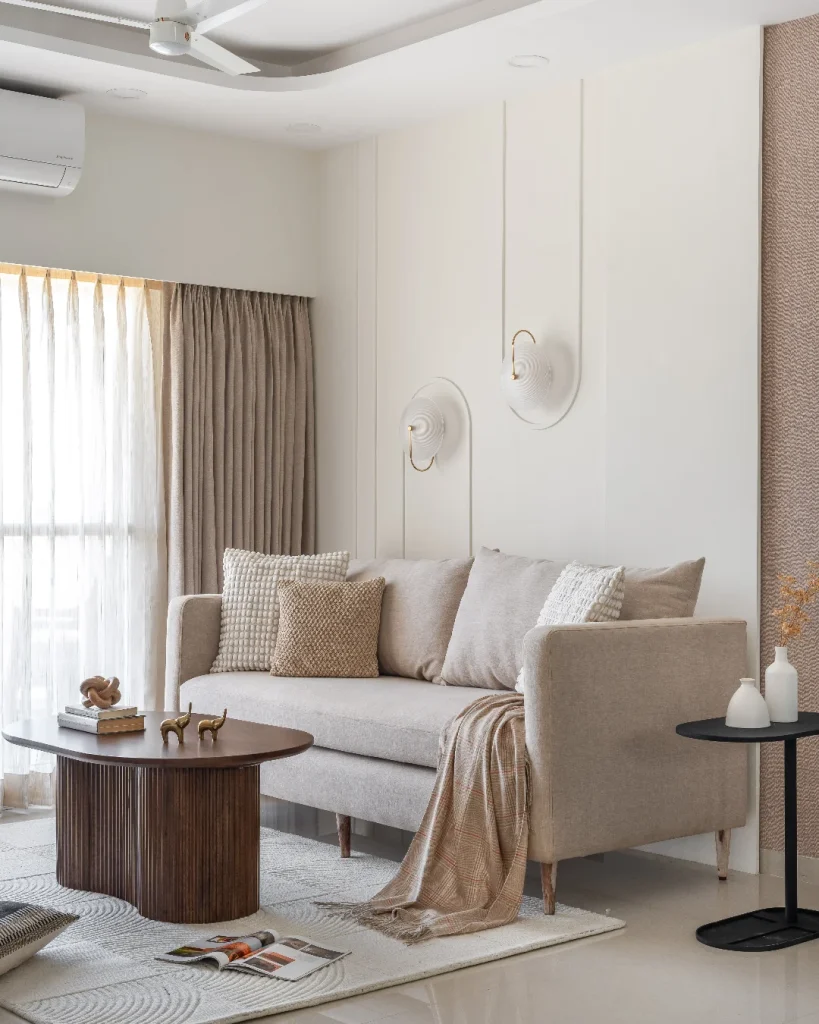
Lighting is a crucial aspect of minimalist living room design. Instead of over-the-top chandeliers or ornate fixtures, focus on sleek, modern lighting options that make a statement without being too busy. Consider minimalist pendant lights, a statement floor lamp, or track lighting for a modern touch.
For an ultra-modern look, you could also opt for lighting that blends into the architecture, such as built-in LED lights or wall-mounted fixtures. These types of lights provide a clean, unobtrusive illumination that complements the minimalist style without drawing attention to the light fixtures themselves.
5. A Single Large Artwork
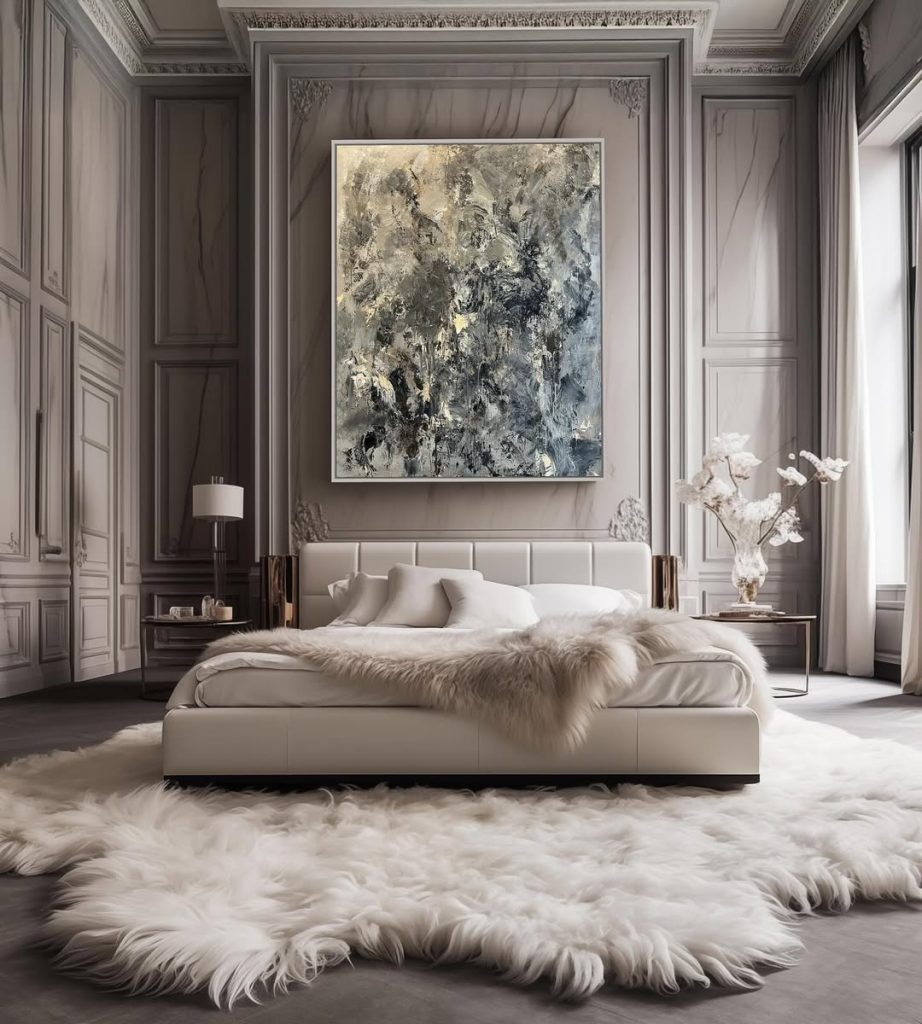
In minimalist design, less is often more, but that doesn’t mean you should avoid art altogether. A large, single piece of artwork can be a powerful statement in a minimalist living room. Instead of cluttering the walls with multiple frames, focus on one big painting, photograph, or abstract print that speaks to you.
Choose artwork that complements the room’s neutral color palette, whether it’s in black and white or soft muted tones. The key is to select an art piece that adds character and visual interest without overwhelming the space. A simple frame or even frameless art can keep the aesthetic clean and refined.
6. Decluttered Shelving
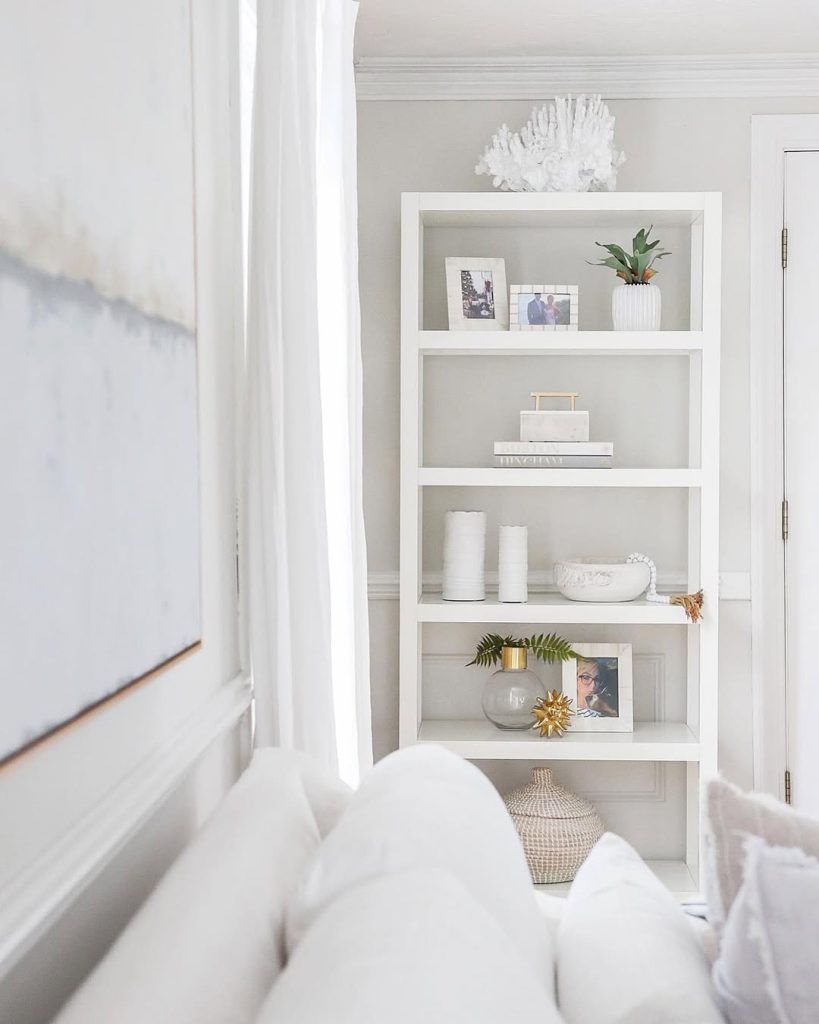
A minimalist living room is free from clutter, so shelves should only hold the essentials. Rather than filling shelves with knick-knacks or unnecessary objects, opt for a few well-chosen pieces that have a purpose or sentimental value.
Think of clean-lined bookshelves that hold a selection of books, a few carefully placed plants, or minimalist decor items like ceramic vases or sculptural objects. This approach keeps the room organized and visually appealing while sticking to minimalist principles of simplicity.
7. Glass and Metal Accents
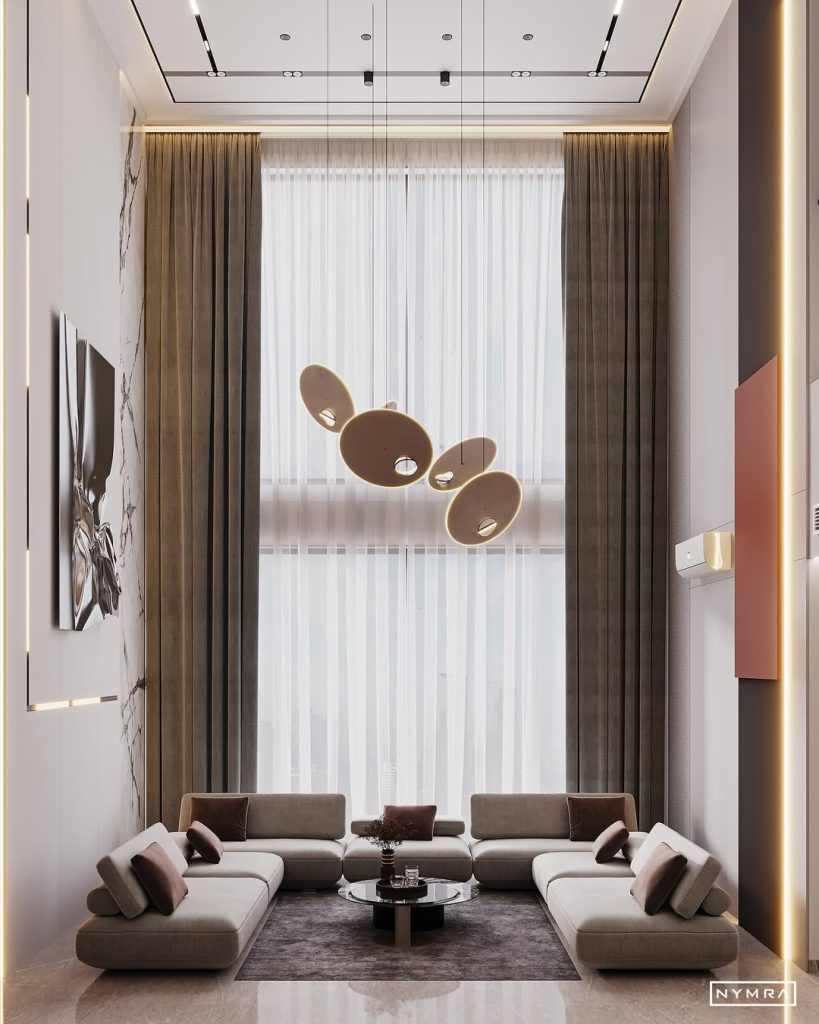
In a minimalist living room, materials matter. Incorporating glass and metal accents helps to create a sleek, modern feel. Consider a glass coffee table with thin metal legs, a minimalist metal console table, or even metal-framed chairs. These materials reflect light and add an element of sophistication to the room.
Glass and metal furniture have a lightweight appearance, which adds to the airy, open feel of a minimalist living room. Since these materials are reflective, they help make the space feel larger by bouncing light around the room.
8. Monochromatic Textures
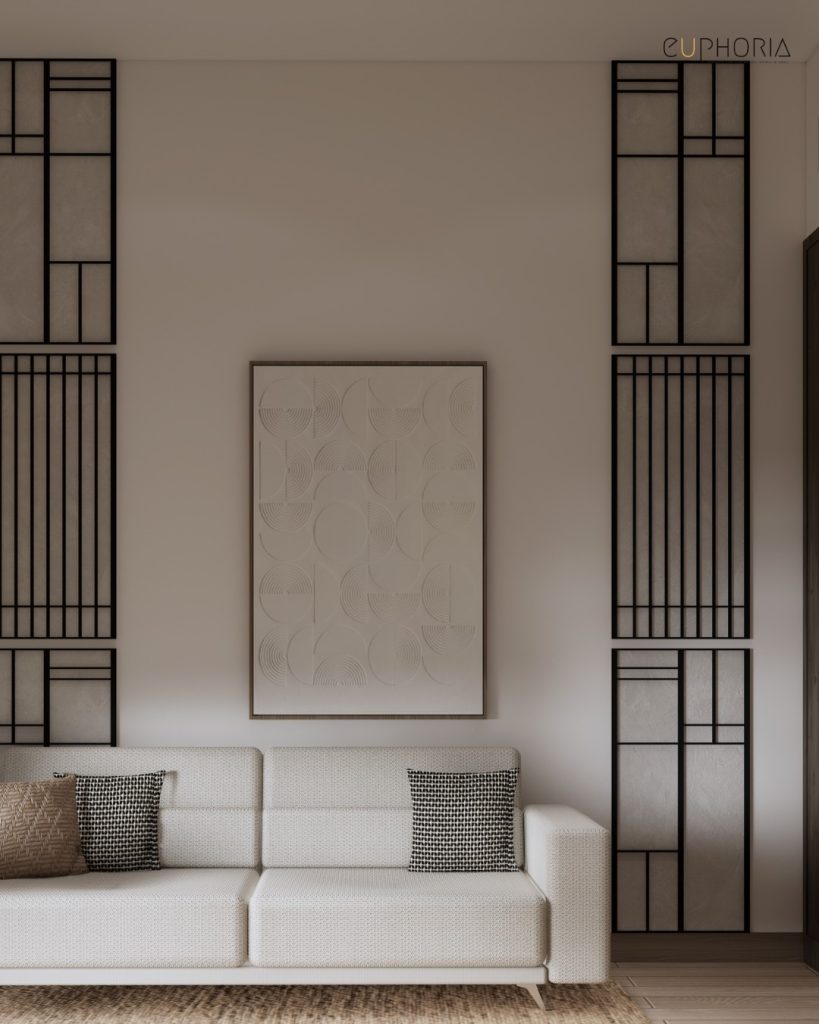
Incorporating monochromatic textures into your minimalist living room adds depth and interest without introducing any visual chaos. Keep the color scheme consistent but vary the materials and textures to create a dynamic yet unified look. For instance, pair a soft wool sofa with linen throw pillows, a sleek leather chair, and a textured wool rug.
By playing with different textures in the same color family, you create a more tactile and visually interesting environment that still maintains the minimalist aesthetic. This approach ensures that your room remains calm and cohesive while introducing richness and warmth through varied materials.
9. Minimalist Media Console
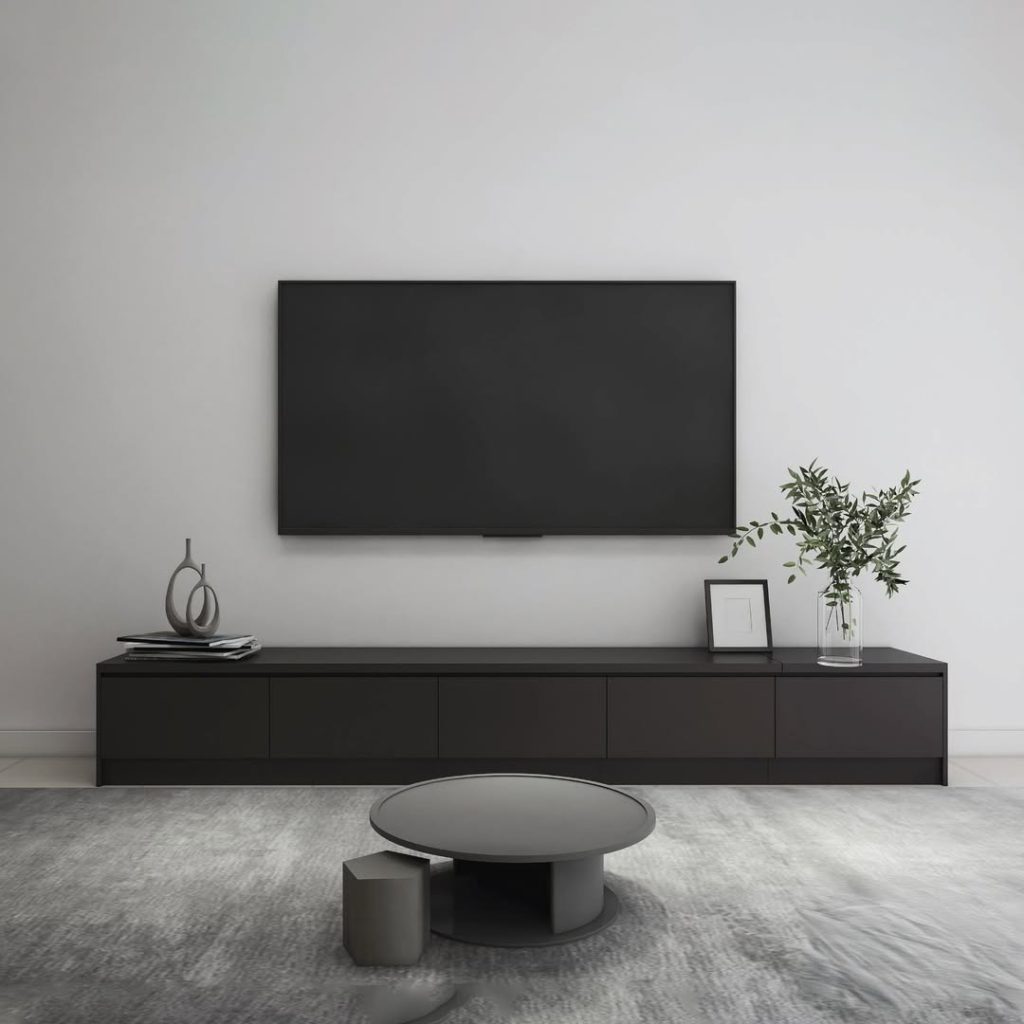
A media console is a must-have for most living rooms, but it doesn’t have to detract from the minimalist aesthetic. Choose a media console that has clean lines and a simple design. Opt for neutral wood tones or matte finishes like white, black, or gray, and avoid bulky or overly ornate pieces.
A minimalist media console should have just enough storage for your essentials like a TV, remote, and perhaps a few decorative items. Keep the surface clear of unnecessary items, focusing only on a few well-chosen accents, such as a minimalist clock or a single decorative bowl.
10. Plants for a Touch of Nature
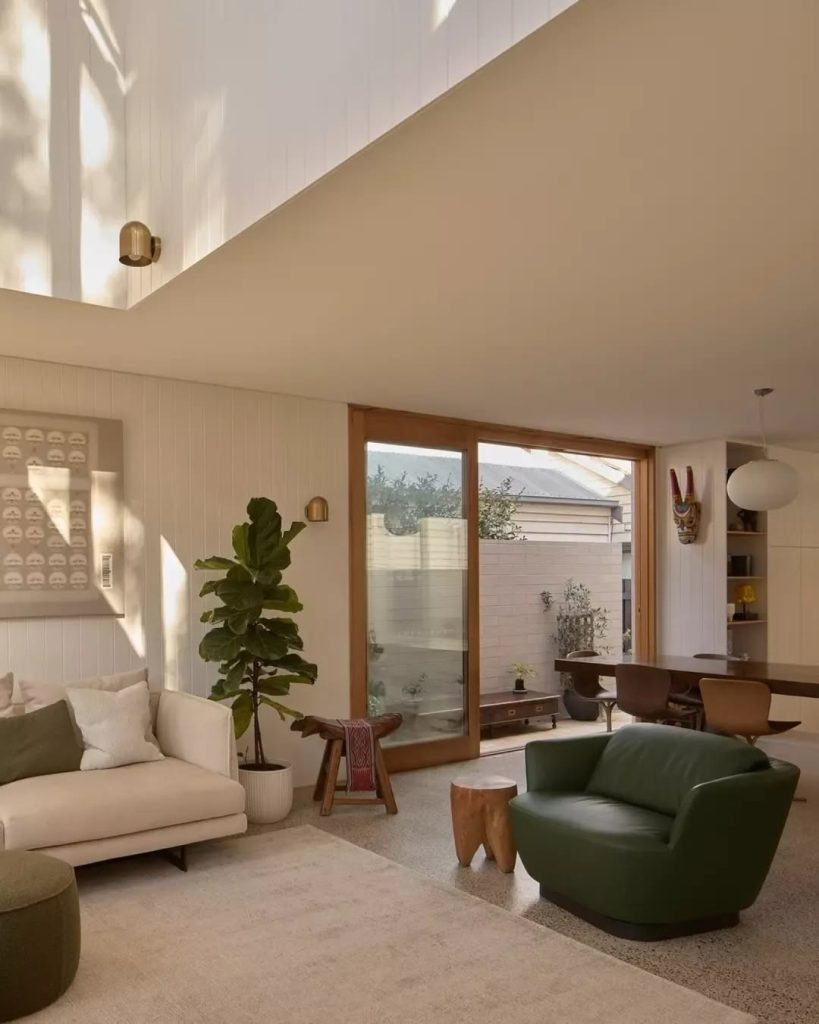
No minimalist living room is complete without a touch of greenery. Plants can bring life and vibrancy to your space while still keeping things simple. Choose plants with clean, sculptural shapes such as snake plants, fiddle leaf figs, or succulents that complement your minimalist theme.
Keep plant containers sleek and understated, opting for simple planters in neutral colors or geometric shapes. Place your plants strategically around the room to create balance and symmetry. Not only do plants add color and texture, but they also improve air quality, which enhances the peaceful environment in your minimalist living room.
11. Minimalist Rugs

A rug can anchor the room while adding texture, but for a minimalist living room, less is more. Opt for simple, neutral-colored rugs that don’t compete with the other elements in the room. Stick to solid colors or subtle patterns, such as geometric shapes or stripes, that complement the overall aesthetic.
Large, flat-weave rugs in shades of beige, gray, or muted pastels work well in minimalist living rooms, providing comfort and warmth without detracting from the clean lines and open feel of the space. Make sure the rug size is proportional to your furniture to maintain a balanced look and prevent the room from feeling overcrowded.
12. Open Floor Plan
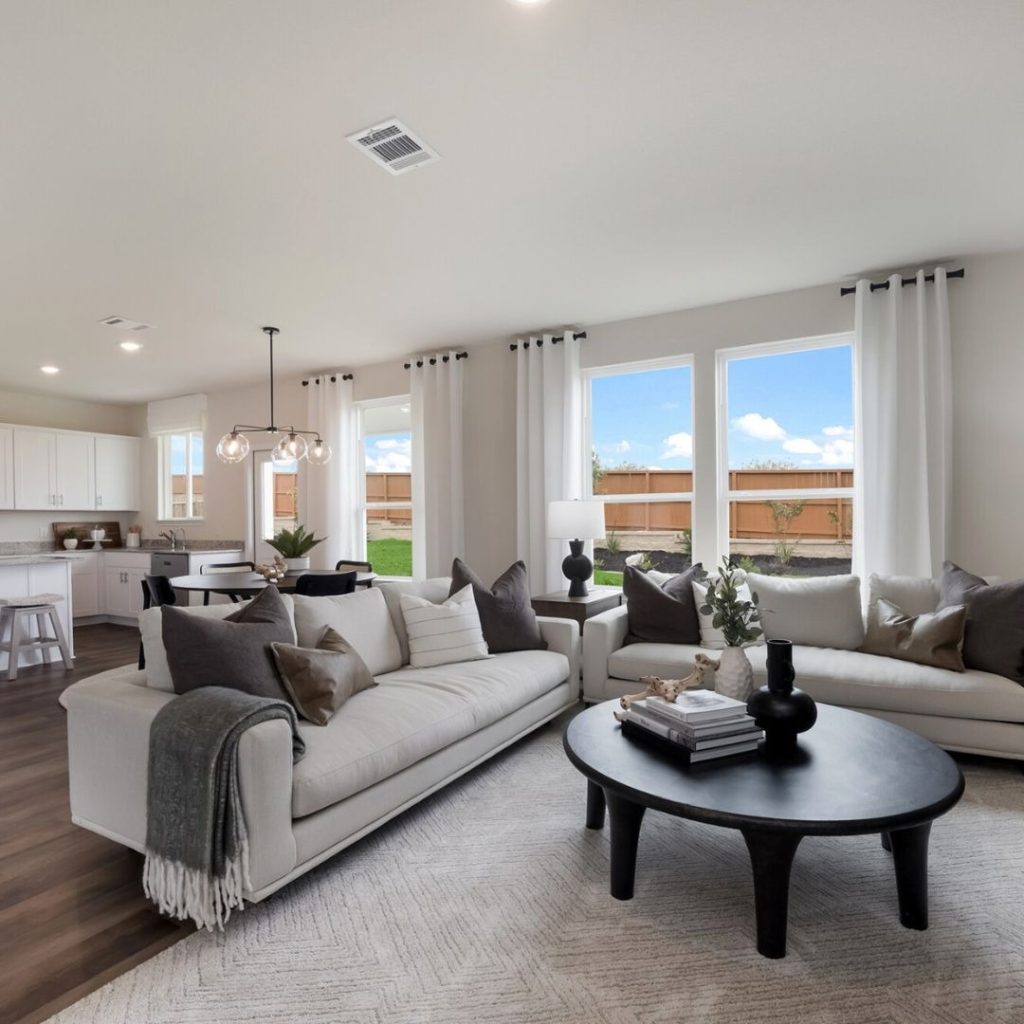
Embracing an open floor plan is one of the most effective ways to achieve a minimalist living room. When walls are minimized or removed, your space feels bigger, brighter, and more connected. An open layout allows for seamless transitions between the living, dining, and even kitchen areas, providing a sense of unity and freedom.
In an open floor plan, furniture placement is key. Keep your seating arrangements and other furniture items strategically spaced, creating flow and openness. The use of large, neutral area rugs can help define different zones without breaking up the flow of the space. An open floor plan is perfect for minimalist living, where simplicity and spaciousness are top priorities.
13. Built-In Storage
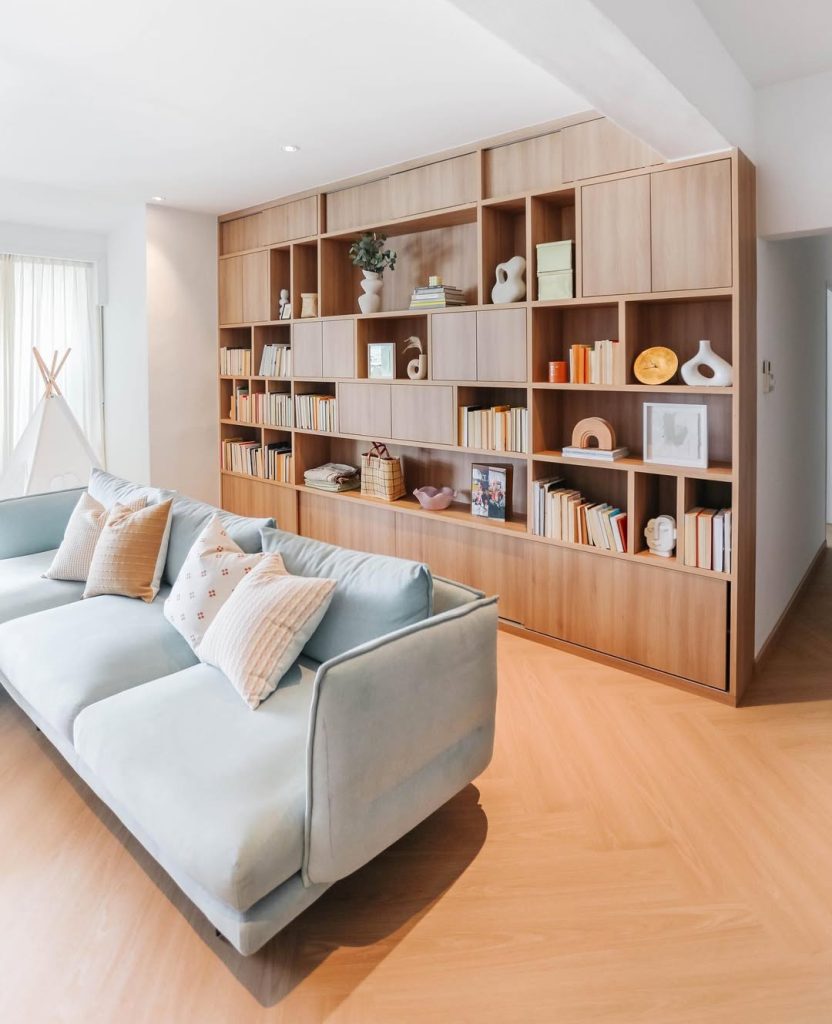
Maximize your minimalist living room’s functionality by incorporating built-in storage solutions. Custom shelving units or hidden storage compartments can reduce clutter and keep your space looking sleek and tidy. These built-in pieces blend seamlessly into the design of the room and can be tailored to fit your storage needs.
Consider a built-in media wall with integrated shelving for books, plants, or decorative objects, or built-in benches with storage underneath for extra seating. Not only will built-in storage maintain the clean lines of your minimalist design, but it will also keep your room organized and free from visual clutter.
14. One or Two Statement Pieces

Instead of filling your minimalist living room with multiple decor items, focus on one or two statement pieces that truly stand out. This could be a piece of art, a stunning sculpture, or a uniquely designed chair or light fixture. By keeping the rest of the room simple, these statement items will shine and become the focal points of the space.
Choose pieces that add character and style without overwhelming the room. A large abstract painting on the wall, a sculptural floor lamp, or a beautifully crafted armchair can become the center of attention, adding personality and interest to your minimalist living room without detracting from its serene atmosphere.
15. Clean, Structured Lines in Furniture
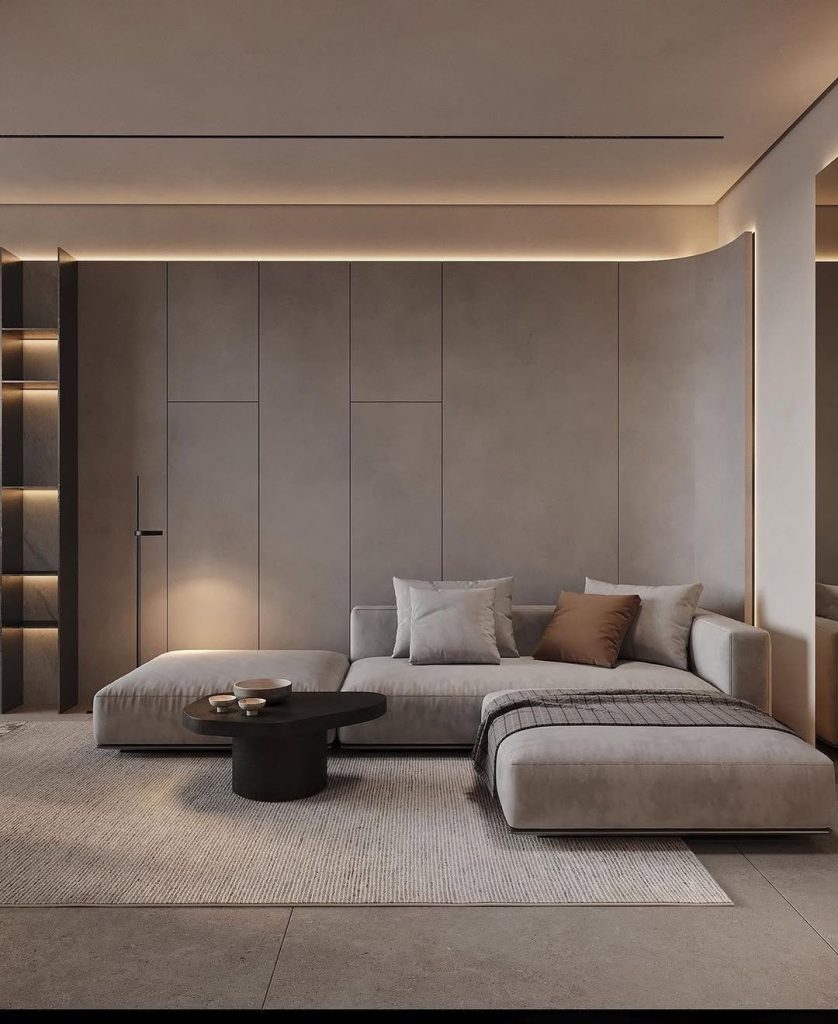
Minimalism thrives on simplicity and clean, structured lines. When selecting furniture for your living room, choose pieces that have straight, crisp edges, avoiding anything too curvy or ornate. This can apply to sofas, coffee tables, chairs, and even shelves.
A sectional with straight, sharp lines, or a rectangular coffee table with clean metal legs, can perfectly complement the minimalist design. These angular forms create a sense of order and structure, which is central to minimalist living. It’s all about reducing distractions and focusing on the essentials, so each piece of furniture contributes to the overall harmony of the space.
16. Use of Negative Space

Negative space, or the empty space around and between objects, plays a vital role in minimalist design. When arranging furniture or decor in your living room, make sure to leave plenty of breathing room between items. This use of negative space creates a sense of calm and openness, allowing each object in the room to stand out without feeling crowded.
In minimalist design, less is often more, and negative space emphasizes this idea. For instance, rather than overstuffing shelves or covering every inch of wall space with artwork, leave some areas empty to allow the room to “breathe.” Negative space helps the eye focus on key design elements, giving your minimalist living room a sense of balance and tranquility.
17. Multi-Functional Furniture
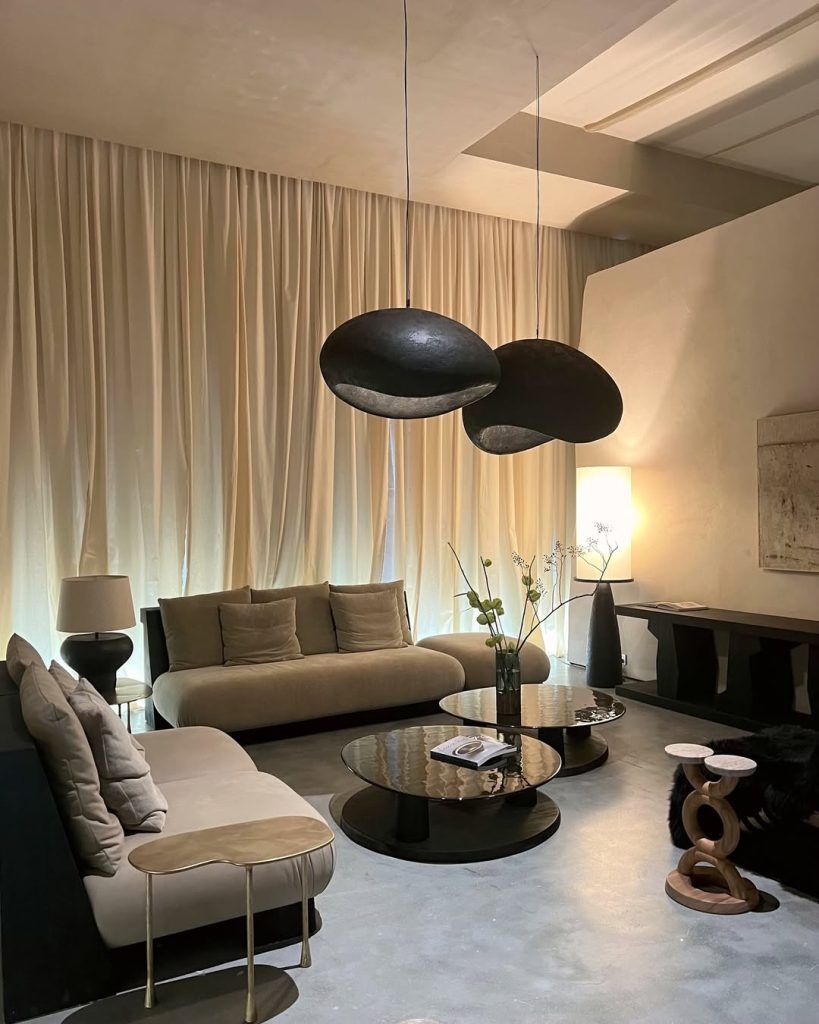
One of the cornerstones of minimalist design is functionality. Multi-functional furniture pieces are essential in creating a minimalist living room that serves both practical and aesthetic purposes. Look for a coffee table that doubles as storage, or a sofa bed that provides extra seating for guests while saving space.
Other options include ottomans that can double as a footrest or extra seating, or side tables with built-in storage for books or magazines. These clever solutions help to reduce clutter while providing functionality, which is key in minimalist living.
18. Minimalist Window Treatments
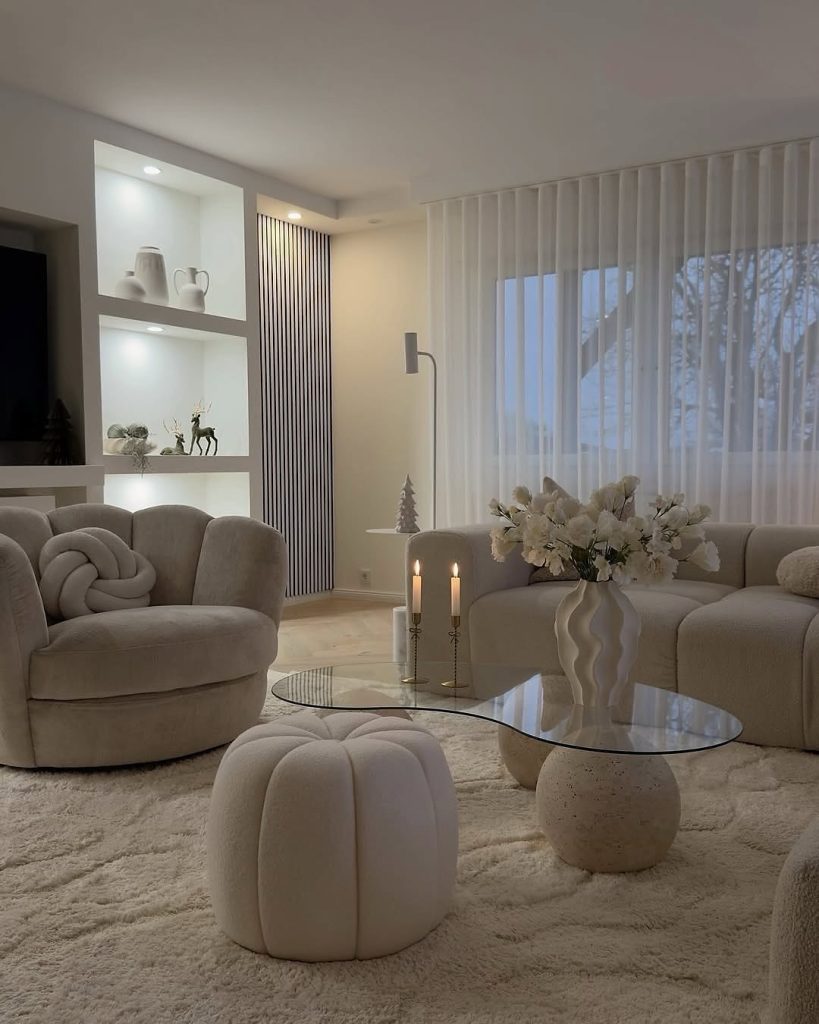
To maintain the minimalist vibe, keep window treatments simple and unobtrusive. Opt for clean, light-filtering curtains in neutral colors or even sheer fabrics to allow natural light to flow freely into the space. Roller blinds or simple Roman shades also work well in minimalist living rooms, as they provide privacy without taking up too much visual space.
Avoid heavy, ornate drapery or curtains with intricate patterns, as these can overwhelm the room. Instead, choose streamlined window treatments that enhance the natural light and let the other minimalist design elements shine.
19. Minimalist Decor Accessories
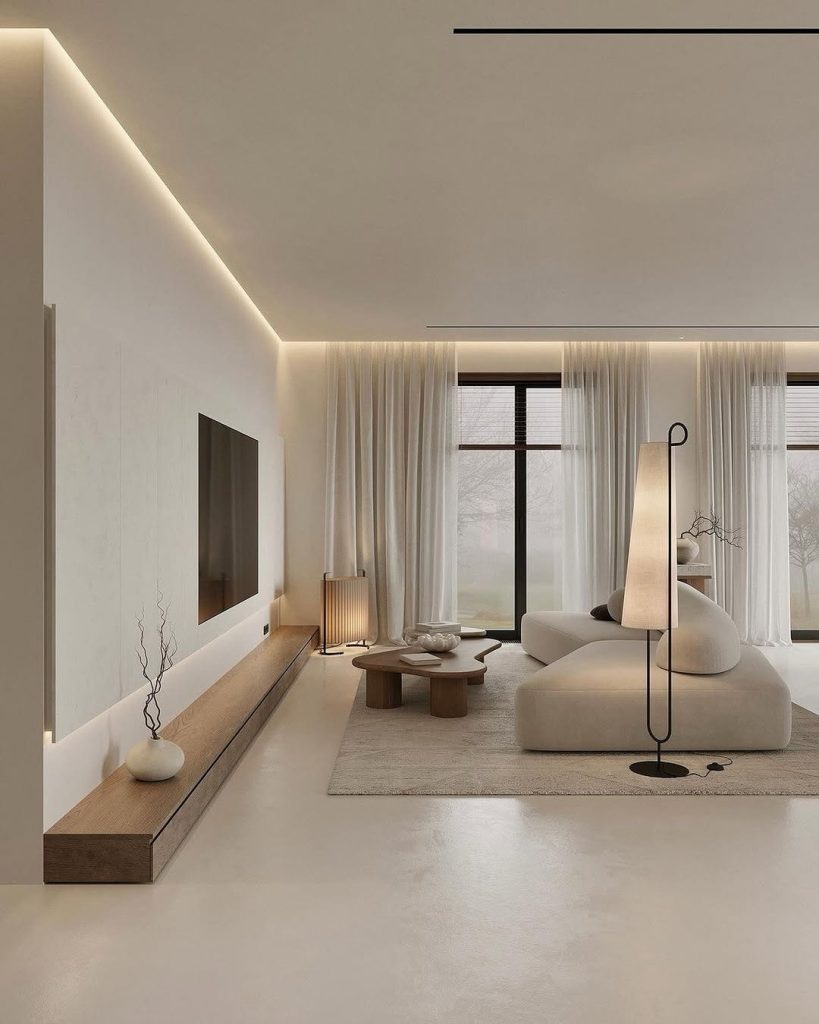
In a minimalist living room, less is always more when it comes to decor accessories. Stick to just a few key pieces that have a purpose or meaning. Simple vases, a small sculpture, or a couple of carefully chosen decorative books can add personality and charm without cluttering up the space.
The key is to focus on quality over quantity. A few thoughtfully placed pieces will enhance the overall aesthetic without detracting from the clean lines and open spaces that make minimalist living so appealing. Remember, in minimalist design, every item should have its place and purpose.
Conclusion
Embracing minimalist living room ideas can transform your space into a calm, serene environment that encourages relaxation and focus. By simplifying your decor, choosing functional furniture, and embracing neutral color palettes, you can create a space that feels open and inviting.
The minimalist approach isn’t about removing everything—it’s about thoughtfully selecting the essentials, eliminating clutter, and creating a balanced, beautiful room that enhances your lifestyle. Whether you choose to incorporate a few ideas or fully embrace a minimalist aesthetic, these tips will help you design a living room that’s both stylish and functional.
Start small, take your time, and enjoy the process of creating a peaceful, minimalist space that reflects your personal style.

